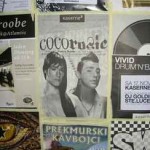Remix, our project for the Biennale in Venice, has now reached Basel, in a larger festival, which was dedicated this year to the Romanian culture: Culturscapes. www.culturescapes.ch.
It’s a combination of factors and events that thrill us. Not only for the sake of our egos, but for the real people and projects we’ve seen there. Since the simplest and the most surprising statement about Basel is that it has a real life, that it’s a real place. And when I say that, I mean that the social and cultural life of this city is deep, with serious ethical roots.
Public transport is pleasant and efficient, people use it proudly, leaving their cars at home; the protection and the support offered to disabled people or their social integration are no jokes, but they work at full speed; culture is active and well balanced, not mere sponsorship and conceited, empty words. A civilization contrasting with the Latin one, a world cast in a different mould from everything we have accomplished or from what the people around us would call cool or hip. “Die Blinde Kuh” (www.blindekuh.ch) “the blind cow” or, more precisely, the name for hide and seek is a … trendy bar, for instance… where people come to experience what being blind is like. This bar is a black box where you are guided, sat at the table, served by real blind people you totally depend on, and where you are not allowed to use the mobile phone. This way, people learn lessons, becoming more open to a better and more tolerant world. And however strange or elitist it may sound to our ears, this project really is specific to Basel.
It feels strange thinking that in such a balanced and quiet environment one would still feel like doing one thing or another, that there is still room for taking initiatives. However, Basel has an impressive collection of modern and contemporary architecture (Herzog & de Meuron, who built around 12 works, have their office in Basel, and so do Diener & Diener, Livio Vacchini & Silvia Gmur, Morger & Degelo etc… an impressive list of great architects), concerts and many museums, festivals, large and small scale projects, meant to face an economic dynamics we cannot understand.
Moreover, let’s not forget their democratic system in which, for any large project, for any construction influencing the community, a referendum is organised, the volume of the building is given a shape using cables at a 1:1 scale on the site and people simply come and vote. I have to ask, what chances would a project of Romanian architecture have to be the topic of a referendum, when not even major public investments get into the competition?
At least we’re lucky to be able to enjoy the landscape, the sense of entrepreneurship, the vivid buzz and the noisy Latinity.


